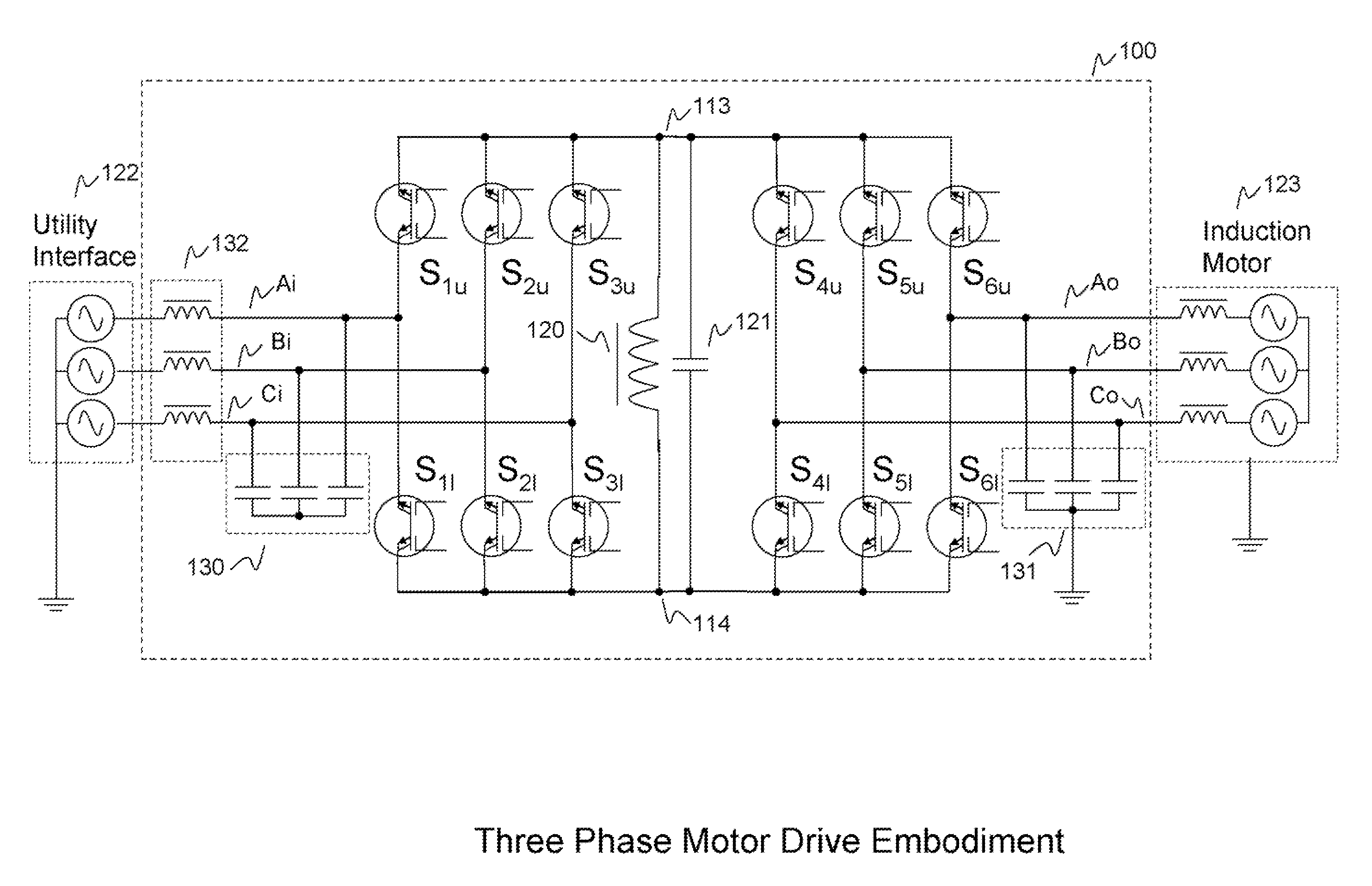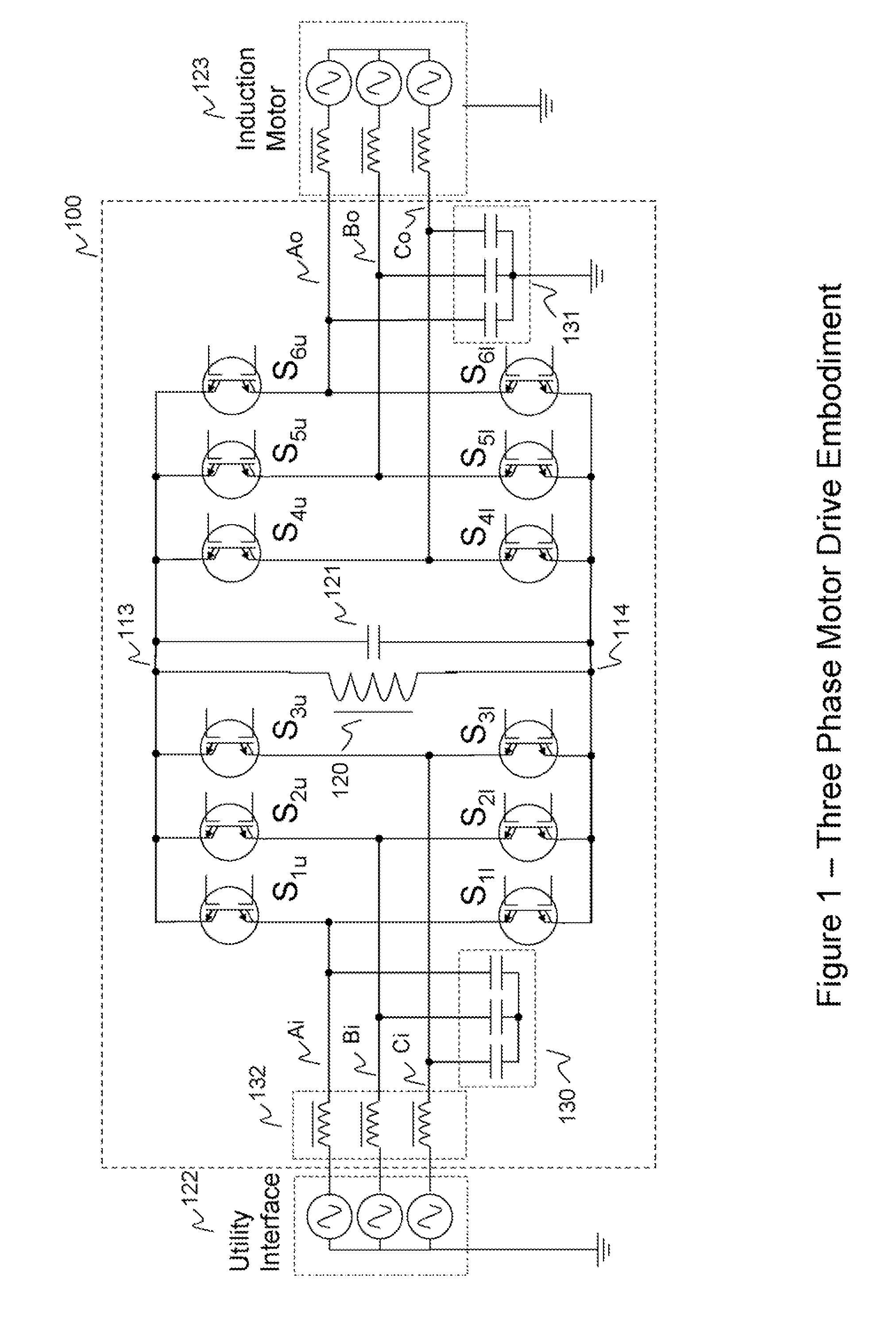Universal Power Conversion Methods
a technology of power conversion and universal power, applied in the direction of electric variable regulation, process and machine control, instruments, etc., can solve the problems of increasing electric losses in the entire electrical distribution system, reducing the drive efficiency, and higher losses in the dc link capacitor, so as to reduce the drive efficiency, increase the electric loss, and increase the loss of dc link capacitors
- Summary
- Abstract
- Description
- Claims
- Application Information
AI Technical Summary
Benefits of technology
Problems solved by technology
Method used
Image
Examples
Embodiment Construction
[0066] The numerous innovative teachings of the present application will be described with particular reference to presently preferred embodiments (by way of example, and not limitation).
[0067] Contrast With Other Approaches
[0068] DC-DC Buck-Boost converters employing resonant techniques to achieve soft switching are also shown in the patent literature (examples are Pat. No. 4,616,300, issued Oct. 7, 1986; Pat. No. 6,404,654, issued Jun. 11, 2002). These are not capable of DC-AC or AC-AC operation, and are also limited in their DC-DC range, in that the output DC voltage must be larger than some minimum in order to achieve zero voltage turn-on of the power switch. In contrast to this prior art, the inventions described below have no restrictions on the relative voltages between the input and output portals, and power transfer is bi-directional.
[0069] A “partial-resonant” 3 phase AC-AC Buck-Boost converter is described in Kim et al., “New Bilateral Zero Voltage Switching AC / AC Conv...
PUM
 Login to View More
Login to View More Abstract
Description
Claims
Application Information
 Login to View More
Login to View More - R&D
- Intellectual Property
- Life Sciences
- Materials
- Tech Scout
- Unparalleled Data Quality
- Higher Quality Content
- 60% Fewer Hallucinations
Browse by: Latest US Patents, China's latest patents, Technical Efficacy Thesaurus, Application Domain, Technology Topic, Popular Technical Reports.
© 2025 PatSnap. All rights reserved.Legal|Privacy policy|Modern Slavery Act Transparency Statement|Sitemap|About US| Contact US: help@patsnap.com



